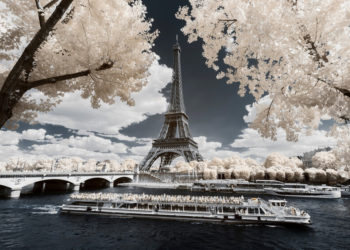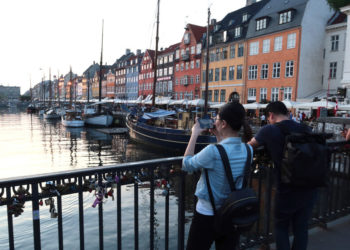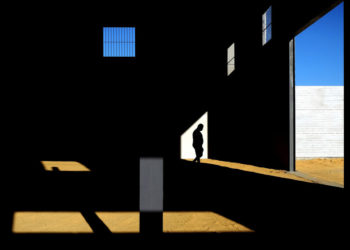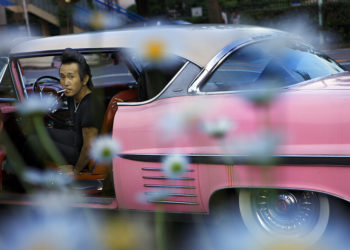home
>
Blog
>
Photography
>
Dynamic range in photography: How to capture more realistic photos?
Dynamic range in still …
Has it happened to you that you are in front of the landscape of the most beautiful colors you have seen and you take your cell phone or camera to portray that moment and the photo does not come out as you thought? We tend to think that we take the photo wrong, but in reality it has to do with the dynamic range in photography.
The concept of dynamic range will allow us to achieve an image that is as faithful as possible to reality, in terms of lights, colors and shadows; the more varied, the greater the dynamic range.
It should be clarified that our eyesight can exceed any dynamic range of a camera And for that reason, we must not despair to look for an identical capture, but rather learn to understand this concept and use it to our advantage to enjoy the landscape while we adjust the aperture of the camera and take one of our best photographs.
Knowing this, we are ready to start. We are going to learn what dynamic range is in photography. 📸
Index
- The human eye vs the shutter
- What is dynamic range in photography?
- How to use dynamic range in photography like an expert?
- Tricks to increase the dynamic range in photography and achieve a photo as real as possible
To begin to understand what dynamic range is in photography, it is worth understanding the difference between human vision and camera vision, because the way of capturing the light is different. In the human eye, for example, the rods of the retina are sensitive to low levels of light and are what allow us to see in this way, that is known scotopic vision.
According to the Fernández-Vega Ophthalmological Institute “the image that we capture through the eyes is not fixed and varies creating different fields of vision, something more similar to a video camera. What’s more, our eye is able to evaluate a scene, depending on the light, and adapt to it with much greater capacity than a camera ”.
This means that although the camera adjusts according to the level of light in the scene, the image processing and the dynamic range of the eyes is wider and faster.
How is the passage of light in the human eye and in the lens?
According to the Hypertext blog “the rays of lights go through our pupil, later they cross the lens, reach the retina, and finally the electrical signals are sent to our brain. Meanwhile in a camera the light must pass through the diaphragm, overcome all those crystals that the lens is made of, until the CCD where the image is formed, which will send the information to the processor ”. Little by little we understand what dynamic range is in photography.
It should be clarified that an organ cannot be compared with a technological device. But, it seems important to us that you are clear about how the dynamic ranges of each one work to understand the why luminosity is perceived and captured differently depending on the dynamic range.
This happens because in the camera we have exposure ranges to fit a scene, while with the human eye it adapts according to the needs of light thanks to the rods of the retina, as we explained previously.
Do you sit in a health article? Every photography expert should know this difference and we are sure that the next time you see a sunrise you will not be discouraged because the photo does not look like you are seeing it, and on the contrary, you will make an effort to adjust the dynamic range in photography.

Through the comparison with human vision, you may have understood a little what dynamic range consists of in photography and how it gives a interpretation of reality through a photo. It is about “the ability to capture the detail in the lights and shadows within the same image and our ideal objective is to achieve almost pure blacks and whites with a large number of intermediate values ”, explains the Photographer’s blog.
Dynamic range in photography is measured through the diaphragm steps, which are the ones that allow light to enter the camera and with it capture the image. Experts say that the more diaphragm steps there are, there are greater possibility of capturing the image as you are seeing it. For this to happen, the dynamic range of a camera should have at least 8 aperture stops.
The above allows your camera the possibility of capture light and dark tones more accurately. Here is an example of dynamic range in photography and how the camera translates a sunset, most of the time over exposing what is lit and under exposing shadows:

Source: Chaman Experience.
Do you want to know how is your dynamic range in photography?
Check the histogram! This is the graphical representation of the luminosity or the tone map of a photograph and it is also the one that gives us the vision of the dynamic range of the camera and informs about the existing tones in the photographed scene.
This graphical representation of exposure levels of an image allows you to see the dynamic range in photography in values from pure black to pure white and the pixels it has.

Source: Chaman experience.
Below we share an example so that you understand how to visualize the dynamic range in photography within your histogram. “This contains information throughout the entire histogram; in the central zone as well as in the extremes (left shadows, right highlights). This means that from this scene, we have managed to obtain a good dynamic range, since we have information on midtones, lights and shadows ”, explains the photographer’s blog.

Source: Photographer’s Blog
You may be wondering what low dynamic range looks like in photography on the histogram. It usually happens when the histogram graphs are concentrated to the left and right side.

Source: Photographer’s Blog
💡The key to a good exposure in photography is to make sure that the real dynamic range does not exceed the dynamic range of the camera, so as not to lose quality.
No matter what camera you have, the important thing is to get the most out of it and achieve very professional results. Therefore, we designed some tips so that the dynamic range of your photographs in photography enhance the result you want to achieve by capturing moments.
Capture in RAW mode
We make this recommendation mainly if you are interested in photographing landscapes, because it is the higher image quality format And in case your camera does not have enough aperture steps so that the dynamic range in photography is very similar to the real image, you can keep the RAW format for later edit the photo in a digital program that helps you to enhance the colors.

Source: Freepik
In case of betting on JPEG
Do you want to print your photo with the colors that captivated you from that special scene? Opt to capture the image in jpeg. In this way, the camera helps you with contrast and saturation trying to simulate the place that you had before your eyes. Thus achieving a good dynamic range in photography.
Adjusts the photographic exposure of the camera
This, regardless of whether we are talking about dynamic range in photography or not, must be a A must do for professional photographers and beginners. So we recommend adjusting the photographic light triangle so that you have the right exposure for your image. If you still don’t know how to do it, in this article you will find a complete guide that can help you.
Remember that if you achieve a good exposure, you are probably reaching an ideal dynamic range of photography.
Compensate the image with a flash
“To avoid errors in the exposition, it is good that you take into account the artificial lighting, if circumstances permit. In this way you will be able to compensate for the abysmal differences in case of some type of high contrast situation ”, advises the page dedicated to photography Alpha Universe
Take advantage of underexposure
An underexposed photo will always be more aesthetic than an overexposed one since the camera has more possibilities of retrieve information from shadows than the lights, so if your photo has low dynamic ranges use this to your advantage and rescue the underexposed details in post-production.
A low ISO for a clean photo
Grainy photos exist, however, we do not recommend them because they take away detail and quality from the original image, so do not despair if you cannot capture the amount of light that the camera dreamed of, use low ISO and rather try to compensate for light with slow shutter speeds. If you think you still need more, consider how to compare cameras based on their dynamic range and decide on the one that you like the most and allows you to achieve your goals.

We have just mentioned some secrets to master the dynamic range in photography of a camera as an expert, which will surely be useful to apply what you have learned and work to achieve a good image.
Now, we want you to achieve that dream photo, because it is not impossible. We share some tricks to increase dynamic range of the camera and result in a photo similar to the one we saw through our retina.
-
Dynamic range in photography: the HDR technique, one of the most famous (High Dynamic Range)
According to DZOOM, the HDR technique “It is a technique to process images that seek to cover the widest range of exposure levels in all areas. And it is achieved by mixing several photos of the same image with different exposures ”. Since you already know what the dynamic range is in an image, you can choose the photo mix more easily.
Operation is easy, all you need to do is take three photos of the same place with a tripod. One of them will be underexposed, another overexposed and the last one in a normal exposure. So you play with the dynamic range in photography by joining the three photos in post-production, using useful information from each of them and highlighting in this mix the lighting, tones and shadows that the original image would have.

This pack of HDR tools will allow you to play with dynamic ranges and get a lot out of it
-
Dynamic range in photography: compress the dynamic range and take advantage of it in the tonal map
Understanding dynamic range in photography is known as tonal mapping, which is “a process that transforms certain tones or colors of an image into other different tones,” says Qué Camera Reflex. At this point you can raise the shadows, recover the highlights and increase contrast.
In addition to this, you could use filters to enhance the colors, but remember that The more natural a photo looks, the more your audience will appreciate it. Even more applause for your work because you did everything in your power to achieve a great result. What are you waiting for to experiment with dynamic range in photography and start capturing moments that are as close to reality as possible? ⚡

![⚡Dynamic Range in Photography: Capture Realistic Photos [2021]](https://big-photography.com/wp-content/uploads/2021/02/rango-dinamico-fotografia-1140x570.png)






Discussion about this post